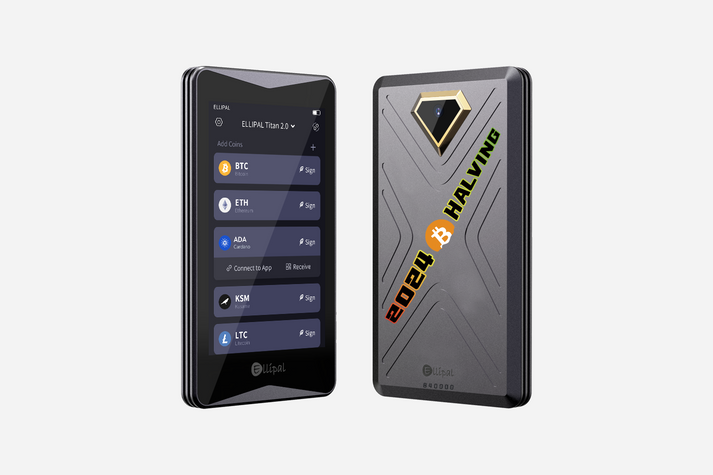Unlocking the Secrets: How a Cold Wallet Keeps Your Bitcoin Safe and Sound!
In the rapidly evolving world of cryptocurrency, Bitcoin stands out as a pioneering digital asset, transforming the way we perceive and conduct financial transactions. However, with great opportunity comes significant risk, particularly concerning the security of these digital assets. As Bitcoin continues to grow in popularity, safeguarding it becomes paramount for investors and users alike. This is where the concept of a cold wallet comes into play. Unlike hot wallets, which are connected to the internet and more susceptible to hacking, cold wallets offer a secure, offline solution for storing Bitcoin. In this article, we aim to provide a comprehensive understanding of cold wallets, their functionality, and how they play a critical role in protecting your Bitcoin assets.

Understanding Cold Wallets
A cold wallet, often referred to as a cold storage solution, is a method of storing Bitcoin and other cryptocurrencies offline, ensuring that they are not vulnerable to online attacks. The primary distinction between cold wallets and hot wallets lies in their connectivity; while hot wallets are linked to the internet, cold wallets remain completely offline, making them a safer option for long-term storage. Cold wallets can take various forms, including hardware wallets, which are physical devices specifically designed to store cryptocurrency securely, and paper wallets, which involve printing out the user's private keys and Bitcoin addresses on a physical piece of paper. Each type of cold wallet has its unique attributes, with hardware wallets often providing enhanced security features, such as PIN protection and encryption. Understanding these differences is essential for users seeking to protect their Bitcoin investments effectively.
How Cold Wallets Secure Your Bitcoin
The security mechanisms employed by cold wallets are designed to protect your Bitcoin from unauthorized access and potential theft. By storing your private keys offline, cold wallets significantly reduce the risk of hacking and phishing attacks. When you transfer Bitcoin to a cold wallet, the transaction is initiated online, but the private keys never leave the device; this means that even if your computer is compromised, your Bitcoin remains secure. The process of transferring Bitcoin to and from a cold wallet involves generating a transaction on your online device, signing it with the private key stored on the cold wallet, and then broadcasting it to the Bitcoin network. It’s crucial to practice security measures during these transactions, such as ensuring that the device connecting to the wallet is free from malware and using secure internet connections. This additional layer of security makes cold wallets an ideal choice for individuals looking to secure their Bitcoin in a more controlled environment.
The Advantages of Using a Cold Wallet
Utilizing a cold wallet for Bitcoin storage comes with numerous advantages that can significantly enhance your cryptocurrency security. One of the most notable benefits is the enhanced security against hacking attempts, as cold wallets are not accessible via the internet. This offline storage method provides peace of mind for users, knowing that their assets are shielded from cybercriminals. Additionally, cold wallets offer users complete control over their private keys, eliminating the need to rely on third-party services that may be vulnerable to breaches. There are specific scenarios where cold wallets are particularly advantageous; for instance, if you plan to hold Bitcoin long-term without frequent transactions, a cold wallet is a prudent choice. A friend of mine, an avid Bitcoin investor, swears by his hardware wallet, claiming it has spared him sleepless nights worrying about online threats.
Potential Risks and Considerations
While cold wallets provide superior security, they are not without potential risks. One significant concern is the physical damage or loss of the wallet itself, whether it's a hardware device that could be damaged or a paper wallet that could be misplaced. To mitigate these risks, it is crucial to implement a robust backup strategy. For hardware wallets, users should store backup recovery phrases in a secure location, while for paper wallets, creating multiple copies and placing them in different secure locations can safeguard against loss. It's also essential to be cautious when accessing your cold wallet to prevent unauthorized access. For instance, my friend, after losing his first paper wallet, learned the hard way about the importance of redundancy and now keeps his backups both digitally and physically secured.
Safeguarding Your Bitcoin with Cold Wallets
In summary, cold wallets offer a reliable and secure method for storing Bitcoin, protecting your digital assets from the myriad of threats present in the cryptocurrency landscape. From their offline storage capabilities to the control they provide over private keys, cold wallets are an essential consideration for anyone looking to invest in Bitcoin. Choosing the right wallet is crucial to ensuring the safety of your cryptocurrency investments, and cold wallets present a compelling option for long-term security. As you explore your cryptocurrency journey, consider adopting a cold wallet as a vital component of your security strategy, ensuring that your Bitcoin remains safe and sound.








